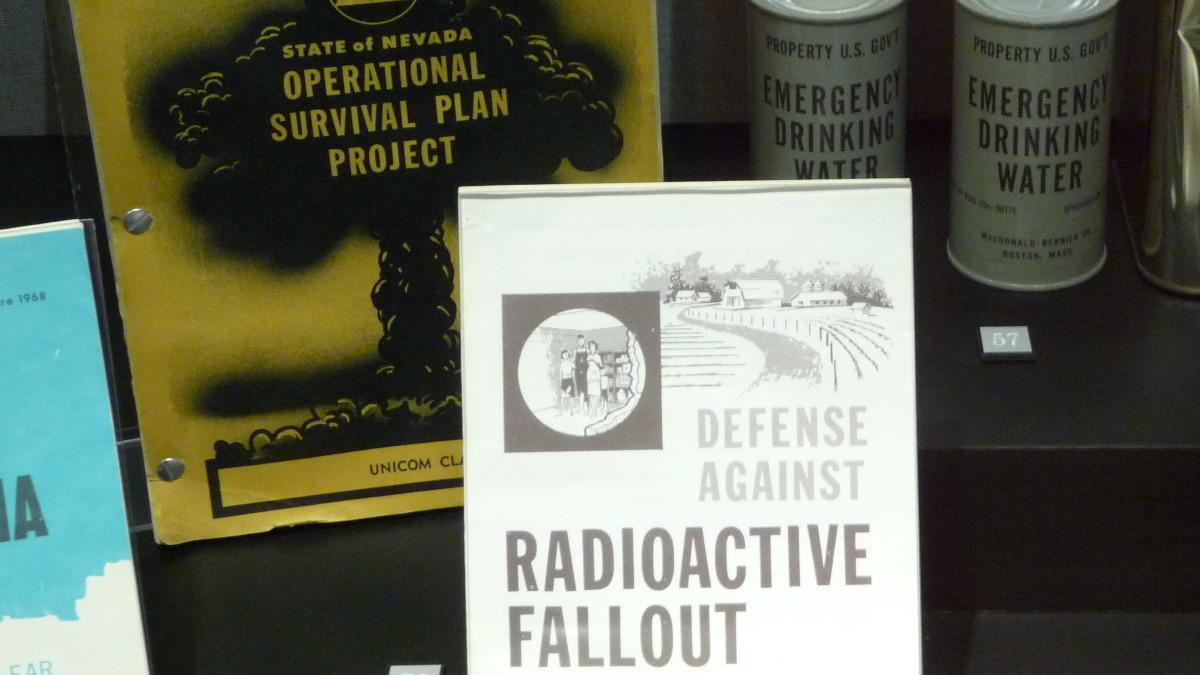Emergency Preparedness Plans for Pets

- posted: Mar. 13, 2022
Emergency Preparedness Plans for Pets
Due to the Russian war against Ukraine, we have received a few questions from clients about keeping pets safe and use of potassium iodide in pets should a nuclear disaster strike. While the threat of nuclear war is remote, Pennsylvania operates several nuclear power plants, including Peach Bottom and we wanted to proactively address any nuclear safety concerns our clients may have. It pays to have a plan in place for your family and your pets if any type of disaster should occur.
Have pet carriers, pet food and clean water available. If you have cats, consider keeping a few disposable litter pans (aluminum pans work well) handy and some cat litter (the light weight kind is easier to handle). If your pet takes any medications, be sure to have a reasonable supply (2-4 weeks) of his or her medications as well as a list of medications and vaccine records. I want to stress there is no current or suspected nuclear threat to the United States and we are not suggesting hoarding or stock piling huge amounts of pet food or medications, but having some supplies set aside may be helpful in the event of any sort of natural disaster such as a blizzard or flood as well as a nuclear plant accident or the like.
Other things to consider: Keep cat carriers or slip leads at the ready so you can get your pets out quickly if you need to evacuate. Trash bags and paper towels are also welcome additions to an emergency kit. A pillowcase can be used as a quick transport carrier for cats, some reptiles or small mammals in an emergency. Having a small first aid kit may also be useful. The advice may be to shelter in place, keep windows closed, stay indoors, etc. so extra towels or “pee pads” may come in handy.
As to the specific use of potassium iodide (KI) to protect people and pets in the event of a nuclear disaster:
- Potassium iodide DOES NOT provide protection against exposure to all types of radiation. It MAY reduce absorption of specific radioactive iodine particles into the thyroid gland.
- It is added to iodized table salt but there is not enough in table salt to be protective. DO NOT ingest large amounts of salt or give salt to pets. Even moderate amounts can be toxic and can cause vomiting.
- KI can be purchased in tablet form without a prescription. While relatively safe, KI CAN be toxic and even fatal in some cases. Do NOT use in people or pets who are sensitive to iodine.
- KI is ONLY effective if given within 4 HOURS OF EXPOSURE TO RADIATION. If it has been more than 4 hours after exposure to radiation, KI WILL NOT PROTECT YOU OR YOUR PET. Consider the age of the pet: administration to young animals may help protect against thyroid cancer; senior pets may not receive the same benefits.
- It is NOT recommended to administer KI unless advised to do so by public health or emergency management officials. Also, if instructed to use KI, please make sure you treat all the humans in your family before giving KI tablets to your pets.
Suggested KI dosing information for pets using 65mg tablets from the Mississippi Board of Animal Health:
Large dogs: 1.0-2.0 tablets per day
Medium dogs: 0.5-1.0 tablets per day
Cats and small dogs: 0.25-0.5 tablet per day
(SOURCE http://www.mbah.ms.gov/emergency_programs/ki_vets.htm)
PLEASE NOTE: Patton Veterinary Hospital does NOT stock potassium iodide and has no plans to make KI available. The information above is only meant to serve as a guideline for those who may want more information on use of KI in animals in the very unlikely event of a nuclear disaster.
Disasters can occur without much warning. Having emergency evacuation plans and kits for your family and your pets may help to prevent tragedy and allow everyone, including our four-legged friends to get to safety.
Basic checklists and more information can be found at:
https://www.fema.gov/media-library/assets/documents/90356 and many other sites.
This blog brought to you by the Patton Veterinary Hospital serving Red Lion, York and the surrounding communities.
Location
Patton Veterinary Hospital
425 E Broadway
Red Lion, PA 17356
